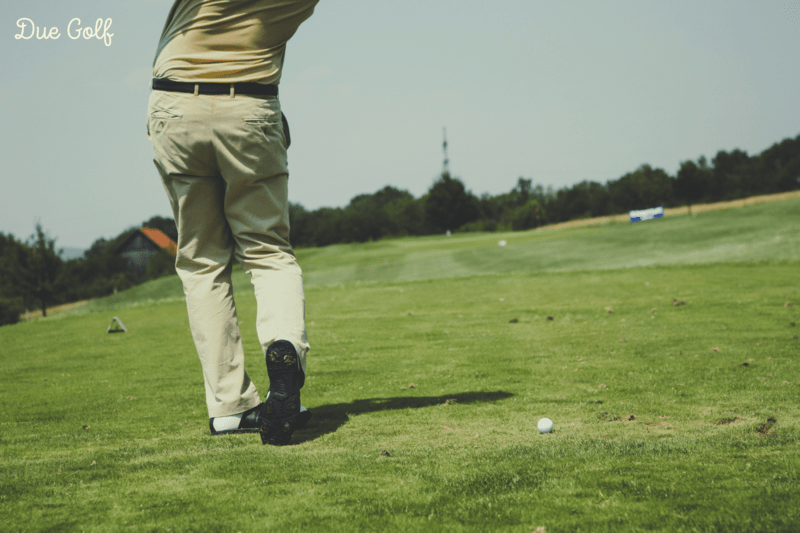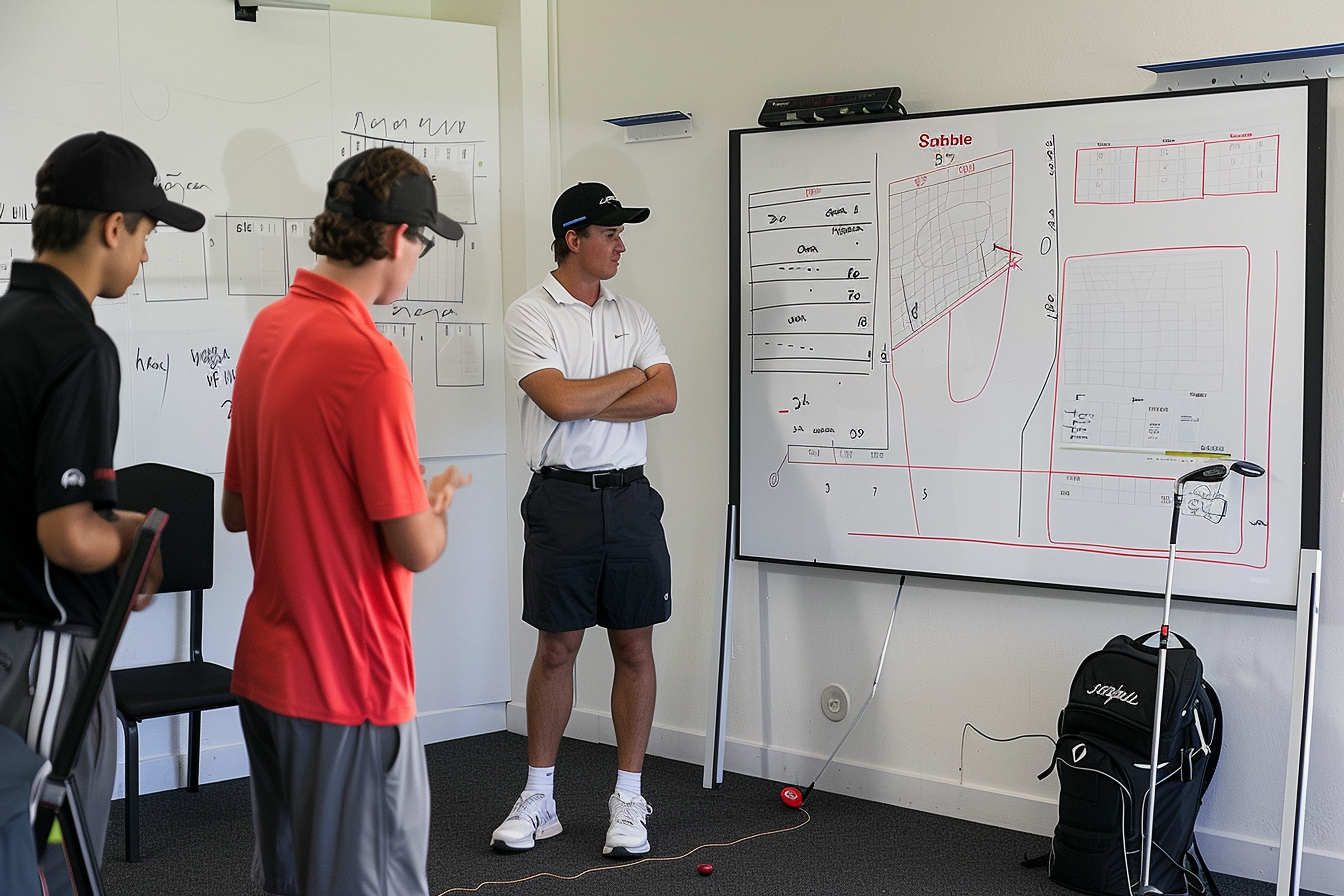
Improving one’s golf game often involves spending time at the driving range, but to translate practice into better performance on the course, a structured approach is essential. A driving range routine facilitates focused practice, targeting specific areas for improvement in one’s swing and overall technique. By adhering to a planned set of activities and drills, golfers can ensure their practice sessions are not just about hitting balls, but about making meaningful progress in their game.
Contents
The essential elements of an effective driving range routine include setting clear objectives, incorporating a variety of clubs into the session, and monitoring technique with drills that reinforce consistency. Golfers find that a systematic routine encourages a disciplined approach, enabling them to work on both their strengths and weaknesses. Whether working on driving distance, iron accuracy, or short game finesse, each aspect of the routine is designed to cultivate a well-rounded skill set.
Embracing the right practice habits can also help golfers develop mental toughness and shot preparation that are crucial during actual play. Regular and deliberate practice on the range can help refine a golfer’s pre-shot routine, manage course challenges, and lower scores. Thus, a driving range routine is an indispensable tool in a golfer’s arsenal, leading them towards enhanced performance and greater enjoyment of the sport.
Crafting a Driving Range Routine
Crafting a driving range routine is a systematic approach to improving one’s golf game. A well-structured routine assists golfers in focusing their practice for effective results.
Warm-Up: Begin with a dynamic warm-up to prepare the body. A few minutes of light cardio can increase blood flow, followed by stretches targeting the shoulders, back, and legs.
- Cardio: Jogging in place or cycling
- Stretches: Arm circles, hip rotations, toe touches
Club Selection: Start with shorter clubs before progressing to the driver. This strategy allows for small adjustments in swing and gradually increases the swing speed.
- Wedges: Short-range pitch shots focusing on control
- Irons: Mid-range shots perfecting swing plane
- Woods: Long-range shots honing distance and accuracy
Practice Drills: Incorporate specific golf drills to work on particular aspects of the swing. These exercises should improve technique and build muscle memory.
- Iron Sweep Drill: Train with a 7 iron to develop a sweeping motion
- Alignment Practice: Ensure feet and shoulders are parallel to the target line
Video Analysis: The use of camera equipment to record swings can provide invaluable feedback. Golfers can monitor their form and identify areas for improvement.
With a clear plan in place, a golfer can make the most of their time at the driving range. By focusing on each step, they systematically develop their skills and apply their practice effectively on the course.
Equipment Preparation
Before one heads to the driving range, there’s merit in ensuring that equipment preparation is thorough. This involves choosing clubs tailored to specific areas of improvement and understanding the different golf ball types for practice effectiveness.
Selecting the Right Clubs
Key Considerations:
- Specificity: Choose clubs that align with the day’s practice goals.
- Variety: Bring a mix of woods, irons, and wedges to work on different shots.
Golf Ball Selection
Golf balls come in various constructions, each with its flight characteristics. There is great importance in using consistent quality balls to ensure reliable feedback during practice.
Classification:
- Two-Piece Balls: Suited for beginners due to durability and distance.
- Multi-Layer Balls: Provide seasoned players with added control and spin.
Warm-Up Exercises
Before one begins a session at the driving range, engaging in warm-up exercises prepares the body for physical activity and helps prevent injuries. It enhances flexibility and stability, laying the foundation for a more effective practice and improved swing mechanics.
Dynamic Stretching
A golfer should start their warm-up routine with dynamic stretching. These exercises involve movement and are designed to increase blood flow, improve range of motion, and activate the muscles. Some effective dynamic stretches for golfers include arm circles, torso twists, and hip rotations. One can begin with arm circles, gradually increasing the diameter to fully warm up the shoulder joints.
Starting with Short Swings
Transitioning into the practice with short swings is an excellent way for a golfer to further warm up their muscles. Starting with wedge shots, one focuses on control and rhythm without exerting full power. Short swings gradually build up intensity and prepare the golfer for longer shots, allowing them to hone in on their technique from the outset.
Structured Practice

When golfers implement a structured practice routine at the driving range, they set the foundation for systematic improvement. This approach is characterised by clear objectives, focused drills, and regular assessment of progress.
Working on Swing Technique
A golfer should begin by assessing and refining their swing technique. This often involves slow-motion swings to ensure each part of the swing is executed correctly. Working with a professional can provide invaluable feedback. Incorporating a driving range practice plan can be particularly beneficial for systematically addressing various facets of the swing.
Improving Shot Accuracy
To enhance shot accuracy, one must practise with intention, targeting specific areas on the range. Alignment sticks or clubs can be used to ensure proper aim and body positioning. Drills that help in tightening shot dispersion also play a crucial role in improving accuracy, as highlighted in tips for more effective practice on the GOLF.com website.
Practising Distance Control
Mastering distance control is central to a successful game. Golfers ought to dedicate part of their practice to hitting shots at different yardages, developing a feel for each club in their bag. Short game practice might involve hitting balls to targets at 60, 80, or 100 meters, creating a workout that mirrors on-course scenarios and helps in solidifying distance judgement.
Shot Specific Drills
Incorporating shot specific drills into one’s driving range routine can enhance precision and adaptability on the course. These exercises target different aspects of the golf game, focusing on long irons, wedges, and driving techniques.
Long Irons
Long irons require skill and finesse, and drills can greatly improve one’s long game. One effective drill is to alternate the target distance with each shot, which encourages adaptability in club selection and shot strength. Golfers might start by aiming at a 150-meter target, then progress to a 180-meter target, learning to adjust their swing power and angle accordingly.
Wedges
Wedge shots are key in short games, and precision here is vital. A common drill is the clock face routine where golfers envision a clock face and practise hitting the ball to specific ‘times’, which correspond to various distances. For instance, they might target a point that represents 30 meters (or 4 ‘o’clock’ on the clock face), then aim for 50 meters (or 2 ‘o’clock’), allowing them to refine their control and approach.
Driving
For the driving component, it’s vital to work on both distance and accuracy. Drills might involve setting out targets at different distances and attempting to hit them with a driver. Consistency is also crucial, so routines such as hitting ten consecutive balls with the aim of landing them in a predetermined area can help in honing one’s driving proficiency.
Mental Preparation Strategies
When approaching the driving range, a golfer’s mental state is as crucial as their physical technique. Pre-Shot Routines establish consistency and focus. Golfers are encouraged to visualise their shot, set specific goals, and rehearse the swing mentally before execution. A consistent pre-shot routine affords a moment of calm, which can be particularly beneficial under pressure.
Developing a Visualisation Technique enables golfers to imagine the trajectory and landing spot of the ball, which can enhance precision and accuracy. For instance, envisioning a shot that lands softly on the green can translate into a more controlled swing.
Goal Setting is integral to a productive driving range session. Golfers should identify specific areas of improvement, such as proper alignment or swing mechanics, and tailor their practice to address these.
In addition, understanding the importance of a Focused Mindset is key. Distractions are to be minimised, and concentration during practice should mirror that of a real game scenario. This might include practicing with an intent to replicate the mental demands of a course.
Lastly, incorporating Warm-up Exercises can prepare both the mind and body. Light cardiovascular activities or dynamic stretching can help focus the mind and reduce anxiety, ensuring a golfer is calm and ready to practise effectively.
By employing these mental preparation strategies, golfers can create a more structured and beneficial practice environment, leading to improved performance on the course.
Cool-Down Activities

Following a rigorous session at the driving range, cool-down activities are vital for promoting muscle relaxation and reducing the risk of injury. These activities encourage a gradual decrease in heart rate and help with muscle recovery.
Stretching A golfer should focus on stretching the muscles that were heavily engaged during the practice session.
- Hamstrings and Calves: They can perform a forward bend to stretch these areas, maintaining each stretch for at least 20 seconds.
- Shoulders and Arms: Using a wall or a golf club, they should gently pull their arm across their chest or behind their head to stretch the shoulders and triceps.
- Torso and Back: Twists can help loosen the lower back and obliques.
Breathing Exercises Deep, controlled breathing assists in the reduction of heart rate and can be combined with stretches for added benefit.
Gentle Movement Gradually reducing the intensity of swings helps the body cool down. They might take some easy swings with a focus on form and balance rather than power.
Hydration Replenishment of fluids is crucial after any physical activity. Golfers should ensure to drink water or an electrolyte-replenishing beverage.
Reflection A golfer may spend a few minutes reflecting on their practice session, mentally noting what went well and what needs improvement for next time.
Incorporating these cool-down exercises can significantly enhance recovery, ensuring a golfer remains in good form for their next venture on the range.
Review and Analysis
When practising at the driving range, one should not only focus on hitting balls but also on reviewing and analysing their performance. This aspect is crucial for identifying strengths and areas for improvement.
Essential steps for review and analysis:
- Evaluate swing mechanics: Observe the swing’s fluidity, balance, and consistency. This can be done by filming and later reviewing one’s swings or by using biofeedback tools if available.
- Assess different club performances: Keeping track of how well one hits with each club helps to understand which clubs need more attention. Specific clubs may require adjustments in technique or grip.
- Analyse shot accuracy and distance: Documenting the accuracy and distance of shots aids in recognising patterns in one’s play. It is beneficial to note if shots are consistently veering to one side or falling short.
- Understand the practice session’s effectiveness: Reflect on whether the practice regime is enhancing one’s playing ability. Consult resources like Golf Insider for comparison.
- Adjust targets: Based on the analysis, it is prudent to adjust practice targets to focus on improving weak spots.
- Seek feedback: Sometimes, an outside perspective can provide valuable insights. Professional instructors or skilled peers can offer feedback on one’s technique and suggest tweaks.
By meticulously reviewing and analysing one’s routine at the driving range, they can make strategic improvements to their game. This analytical approach ensures that practice time is used effectively, leading to a better performance on the course.
Frequently Asked Questions
What is the most effective practice plan for the driving range?
The most effective practice plan includes structured goals, such as hitting a certain number of balls with each club, working on swing mechanics, and employing targeting and aiming drills. Such a plan combines both technique refinement and muscle memory development.
How can a beginner develop a productive routine at the driving range?
A beginner should start with mastering the fundamentals, including grip, stance, and posture, before gradually moving on to more complex swings. It’s beneficial to incorporate drills that reinforce these basics and don’t overlook the importance of consistent practice sessions.
What are the best techniques for improving iron shots at the driving range?
For improving iron shots, golfers should focus on achieving consistent ball contact and work on their swing path and alignment. Drills that promote a controlled swing tempo and precise ball striking are pivotal for iron play.
How often should one visit the driving range for optimal practice?
Optimal practice frequency at the driving range varies by individual, but a routine of hitting balls several times a week can help maintain and advance skills. Regular practice is instrumental in building muscle memory and honing techniques.
In what way should a golfer structure their driving range session for maximum benefit?
A golfer should structure their driving range session with a balance of warm-up, technique drills, skill challenges, and cool down. Sessions should have clear objectives, such as working on flexibility or increasing swing speed, to maximise benefits.
What are the recommended exercises to include in a golf practice routine?
Recommended exercises for a golf practice routine include light cardio for warm-up, dynamic stretching for flexibility, and golf-specific exercises to target stability and strength. These exercises are crucial for preventing injury and enhancing overall performance on the course.

